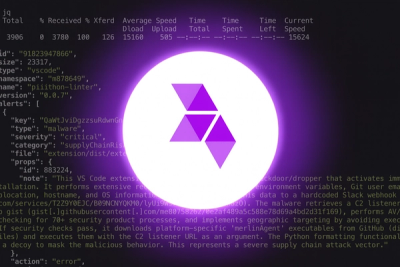
Product
Introducing Webhook Events for Alert Changes
Add real-time Socket webhook events to your workflows to automatically receive software supply chain alert changes in real time.
storybook-addon-performance-cli
Advanced tools
# pnpm
pnpm add storybook-addon-performance-cli --dev
# yarn
yarn add storybook-addon-performance-cli --dev
# npm
npm install storybook-addon-performance-cli --save-dev
The CLI is designed to be used in conjunction with the artifacts
produced by the storybook-addon-performance and the Save API.
A collection of artifact JSON files (1-n) should be in placed in directories representing the current and the baseline results.
Use the flags -c and -b to specific the current and baseline directories respectively.
$ sb-perf -c <current> -b <baseline>
This will output a directory sb-perf with a number of comparison artifacts.
In our analysis there is some natural variability between individual runs / artifacts. By using a many artifacts we get better overall approximations and see less outliers. That said the CLI will work perfectly fine with only a single artifact.
Given a directory structure like this:
base/
- result1.json
- result2.json
other/
- result1.json
- result2.json
You would run the cli with:
$ sb-perf -c other -b base
Which produces the following artifacts in the current directory:
sb-perf/
# a confluence atlassian data format which can be loaded as pretty comparison table
- adf.json
# The aggregate data in the baseline directory
- baseline.json
# The comparison data
- current-vs-baseline.json
# The aggregate data in the current directory
- current.json
At Atlassian we run the storybook-addon-performance in CI to compare branch performance. We do this in the following way:
We store a baseline branch story artifact in object storage. For example, the story for @atlaskit/button would be the amazon.s3 key /master/button/<story>.
We then:
storybook-addon-performance-cli - the schema and file format are built to be compatible.This approach only works where the container being used to run the storybook is kept as consistent as possible (eg fixed memory / CPU allocation) and a consistent environment. As soon as any of the test-runner software is updated you'd need to regenerate any baseline branch artifact.
Additionally this flow is only considered indicative not scientific. If we see large fluctuations this can trigger further manual investigation.
Made with ❤️ by your friends at Atlassian
FAQs
storybook-addon-performance-cli 💻
We found that storybook-addon-performance-cli demonstrated a not healthy version release cadence and project activity because the last version was released a year ago. It has 1 open source maintainer collaborating on the project.
Did you know?

Socket for GitHub automatically highlights issues in each pull request and monitors the health of all your open source dependencies. Discover the contents of your packages and block harmful activity before you install or update your dependencies.

Product
Add real-time Socket webhook events to your workflows to automatically receive software supply chain alert changes in real time.

Security News
ENISA has become a CVE Program Root, giving the EU a central authority for coordinating vulnerability reporting, disclosure, and cross-border response.

Product
Socket now scans OpenVSX extensions, giving teams early detection of risky behaviors, hidden capabilities, and supply chain threats in developer tools.